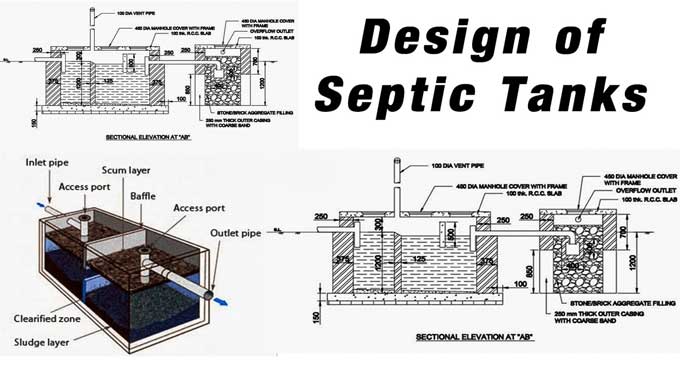
Know about the Septic Tank, and how to estimate the Septic Tank Size
A Septic tank is a small-scale onsite sewage treatment system that collects sewage for bacterial breakdown. Sewage is a collection of wastewater from residential, commercial, and industrial sources. Human body wastes such as urine, feces, and wastes from the bathroom, washroom, kitchen are referred to as domestic purpose sewage. Industrial and commercial sewages are considered a combination of both industrial and commercial wastages.
These sewages contaminate the environment, resulting in marine pollution, bad odors in the living environment, pollution of ground and surface water, and a range of diseases. Sewage treatment is required to combat this.
When a personal (domestic or commercial) sewage system is not connected to the public sewage system, a septic tank is required to treat the sewage.
Those septic tanks must be drained using equipment from the public or private sewage cleaning sectors unless it is treated with a soakage pit. Septic tank-treated sewage is still unclean, implying that only 60-70 percent of sewage is cleansed in the septic tank.
Suitable locations for A Septic Tank
Mostly Septic tanks are ideal for rural and urban regions without access to proper sewer systems. Every residential or commercial facility now includes a septic tank to store sewage waste before it reaches the sewer line, preventing blockages. In general, a septic tank is built with rectangular concrete or brick walls and a minimum of two chambers included in it.
Processing of a Septic Tank
The effluent might be either liquid or solid waste that is sent to a septic tank via the inflow pipe. The retention period was designed into the septic tank to retain the wastewater for a minimum of 18 to 24 hours.
The biological action of anaerobic bacteria degraded the sludge during this time, and the solid waste settled down as sludge. The surface water is then channeled into the soak pit via an exit pipe. After 1 to 2 years, the settled sludge will be removed.
How to determine the Septic tank Size
Suppose you have a tank size based on your house members.
Let us assume you have a total of 5 members in your house.
Water usage for cooking= 5 liters.
Water usage for bathroom and washroom= 85 liters per member; for 5 members = (85*5) = 425 liters a day.
Waters usage for clothes and utensils = 30 liters.
Cleaning house= 10 liters.
Other water-related usages= 5 liters.
Total water usage for 5 members = 475 liters.
So let's again assume that the septic tank can hold the household wastewater capacity for up to 3 days.
Total wastewater in 3days= (3* 475)= 1425 liters.
Let us take a whole figure of 2000liters of a septic tank for a home. The minimum depth of the septic tank cannot be less than 1.8m.
Sludge per member = 30 liters.
Sludge is removed after every 2 years.
Total sludge= 30 liters* 5 members* 2years.
= 300 liters.
Total tank capacity = 2000+300
= 2300 liters
We know that 1 cum = 1000 liters = 2300/ 1000 = 2.3 Cum.
Area required 1.8m depth = 2.3/1.8 = 1.2 Sqm.
The length and breadth ratio of the septic tank is 4:1 or 2:1
Length & Breadth ratio taken as 4:1
So 4B*B = 1.2 Sqm where B= 0.54m.
Please note that the breadth of the tank should be a minimum of 750mm.
So that length = 4*0.75 = 3m.
Length= 3m; B= 0.75m; Breadth= 1.8+0.3= 2.1 m
So the tank capacity can be= (3*2.1*0.75)
= 4.725 Cum
= 4.725* 1000
= 4725 liters.(Ans)


